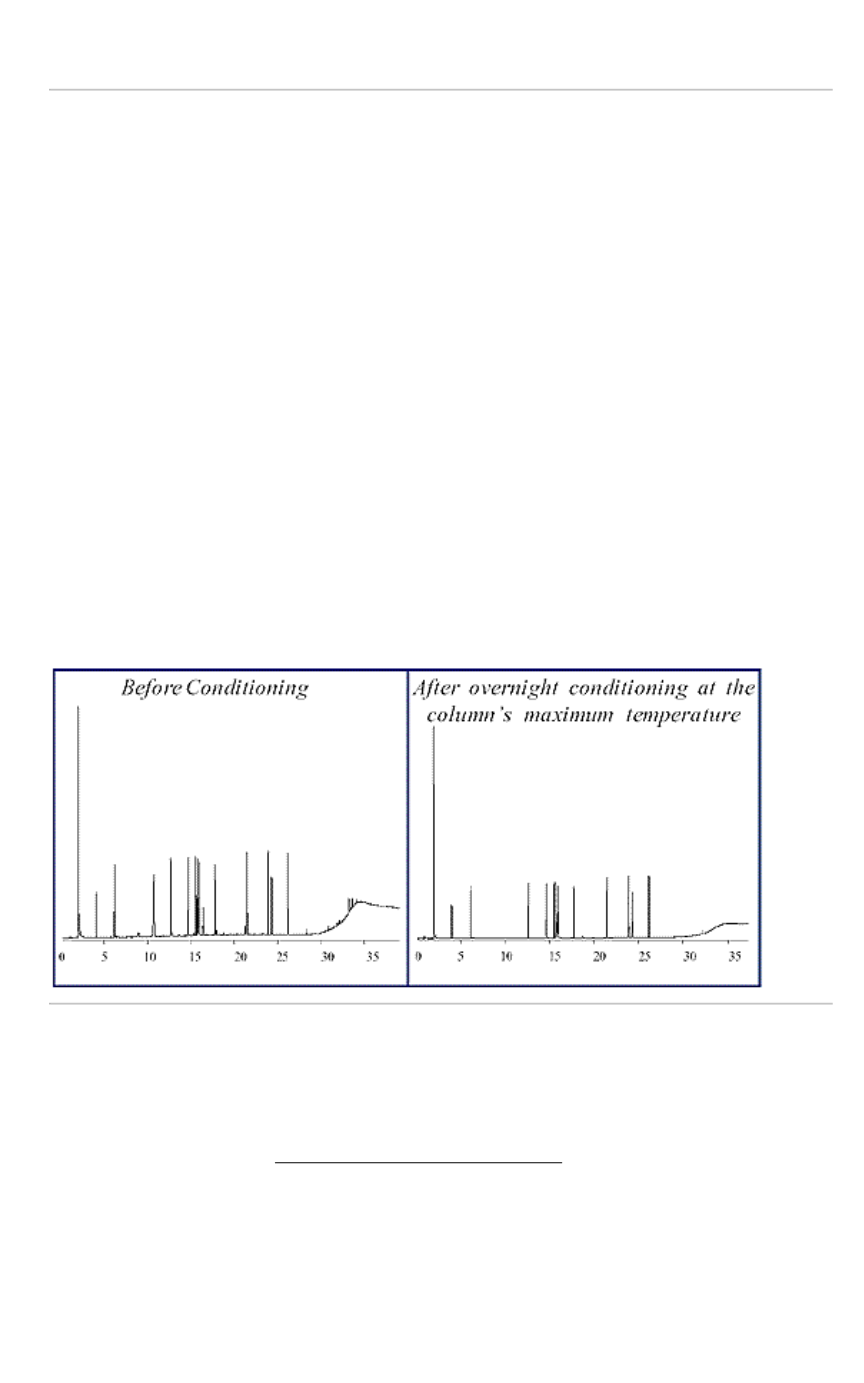
RestekCapillaryColumn InstallationGuide, Section II
solvent peakmust be corrected before using the column analytically.
V. Conditioning
Before conditioning a column at an elevated temperature, make sure there is proper
flow, there are no leaks present, and there is an ample supply of oxygen-free carrier
gas for the conditioning period. Conditioning at elevated temperatures without flow
permanently damages or destroys the performance of the capillary column.
Conditioningwith an oxygen leak present causes the column to exhibit permanent high
bleed and destroys its utility at high operating temperatures.
To condition the column, set the GC oven at 40°C, hold fifteenminutes, then program
at 10°C/min. to themaximum operating temperature (see the test chromatogram
includedwith the column). Alternatively, the column can be conditioned 25°C below the
maximum operating temperature if it is going to be used at relatively low temperatures.
Hold the column at this temperature for two hours or until the baseline stabilizes.
Overnight conditioning is not necessarywith Restek capillary columns operated at
moderate detector sensitivities (approx. 8 x 10
-11
AFS). Overnight conditioning is
necessarywhen the column is going to be operated at high detector sensitivities (<4 x
10
-11
AFS) and at oven temperatures close to themaximum operating temperature (see
Figure J
). Extra conditioningmay be required if operating the column at high sensitivity
(<1 x 10
-11
AFS) or using thick films (>1µm). The column should not be installed in
very sensitive or hard-to-clean detectors such as ECDs, NPDs, FPDs, PIDs, ELCDs, or
Mass Spectrometers during the initial conditioning period. This practice is particularly
important with very thick film columns (>3µm) which producemore stationary phase
bleed. (Before conditioning thick film columns, cap the detector.) The Crossbond®
procedure used by Restek produces columns with very low bleed levels. If your column
is experiencing higher bleed than shown on the test chromatogram, contact us
immediately at 800-356-1688 (ext. 4).
Figure J
: Overnight conditioning reduces column bleed
VI. TestMixtures
Restek tests every columnwith a stringent test mix to determine that the column and
GC systems are performing correctly. It is good analytical practice to run the test
mixture before analyzing samples to assess system problems or chemical
incompatibilities that may be present. It is also good practice to inject the test mix
weekly tomonitor column performance and to indicatewhenmaintenance procedures
are needed. Refer to the
section in this guide.
Inject a column test mixture according to the test chromatogram conditions. Review the
test chromatogram to determine peak identities for your specific column. Carefully
compare Restek's test chromatogram and your analytical run, noting changes in peak
shapes. In general, tailing hydrocarbon and Fatty AcidMethyl Ester (FAME) peaks
indicate dead volume or contamination in the inlet or detector. Check the inlet and
outlet sleeves for ferrule or septa fragments and reinstall the column. Excessively tailing
solvent peaks and tailing or adsorbed peaks such as 2,3-butanediol, octanol, 2-


